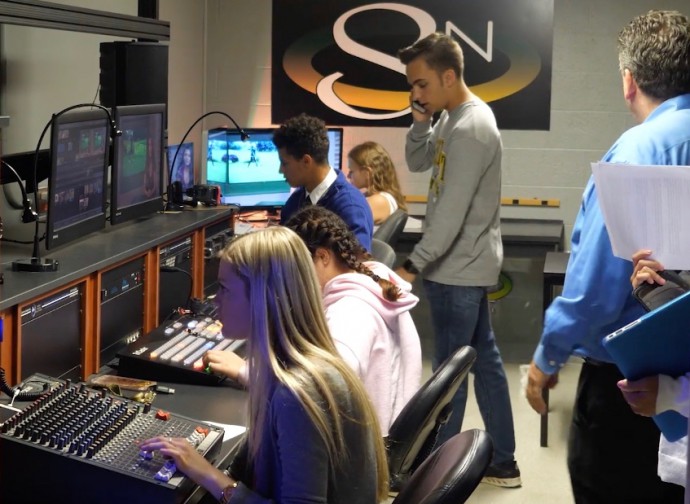Pain and Buffering: MediaDS Saves Award-Winning High School Media Program
By Jim Bask
 American flags flutter from every streetlight along Park Avenue in downtown Amherst, Ohio, despite the fact that it’s closer to Labor Day than the Fourth of July. At Ziggy’s Restaurant, the heady smell of Thursday’s perennial lunch special, the homemade meatloaf sandwich, begins to waft up into the foggy, early morning air. The Marion L. Steele Comets are just two days away from the high school football season opener, and every square foot of lawn in this town of 12,000, 35 miles west of Cleveland, is littered with signs extolling “Comet pride.” Welcome to small-town America, a snapshot of the past, frozen in time.
American flags flutter from every streetlight along Park Avenue in downtown Amherst, Ohio, despite the fact that it’s closer to Labor Day than the Fourth of July. At Ziggy’s Restaurant, the heady smell of Thursday’s perennial lunch special, the homemade meatloaf sandwich, begins to waft up into the foggy, early morning air. The Marion L. Steele Comets are just two days away from the high school football season opener, and every square foot of lawn in this town of 12,000, 35 miles west of Cleveland, is littered with signs extolling “Comet pride.” Welcome to small-town America, a snapshot of the past, frozen in time.
But not everything in Amherst has been trapped in a time warp. Over at the high school, exciting things are happening, groundbreaking stuff involving the latest technology. Every school has its strengths, a signature program it’s known for, and at Steele High School, it’s the top-notch media program. Every year for the last decade or so, the television classes at Steele High School have been winning awards, and that’s thanks in part to the latest equipment from NewTek.
“Last year, in the National Academy of Television Arts and Science’s student production awards, they gave out eight awards in our three-state region and we won five of the eight,” media teacher Mark Lowrie tells me, standing in front of a Plexiglas trophy case with six shelves crammed full of trophies. The wall behind the trophy case is also filled with framed honors, so many awards there’s no room to hang anymore. Every ambitious student at Steele High School wants to be part of the school’s media program, but not everybody gets in. For the twenty seniors lucky enough to be chosen for the media program, producing the daily newscast at Steele is far more than just a class they attend every day.
“It’s a two-year program,” Lowrie says. “Students audition as sophomores, and once they gain entrance into the class, they’re here for parts of every day their junior and senior years. Junior year is like Minor League baseball. The students learn to run the equipment, edit, shoot and write. Then, senior year is the Major Leagues. We’re producing 130 to 140 live news shows a year, an original show almost every day. We get an eleven-minute window, some days a little bit longer. When the bell rings, we are on live.”
Producing 140 Shows a Year
It’s 8:00 a.m., Thursday morning, in Steele High School’s television control facility, and both the studio and control room are packed with anxious students. Airtime for the morning’s live newscast is less than an hour away, and the production team is frantically making last-minute preparations. The show open still isn’t edited, and there are audio problems with the remote live shot that will be part of the show. The program’s anchors for the day, Marissa Gillam and Gehrig Gabrie are struggling to get their copy edited before it goes to the Teleprompter. Everyone on the production team is all business, totally focused on the task at hand. Everywhere you look, there are determined faces, an unexpected level of maturity for a group of high schoolers….[continue reading]

